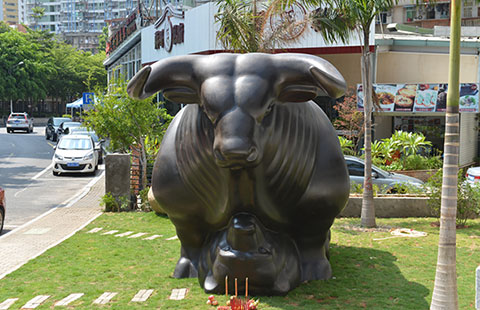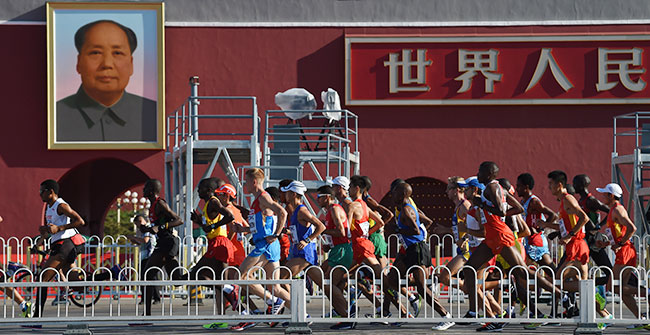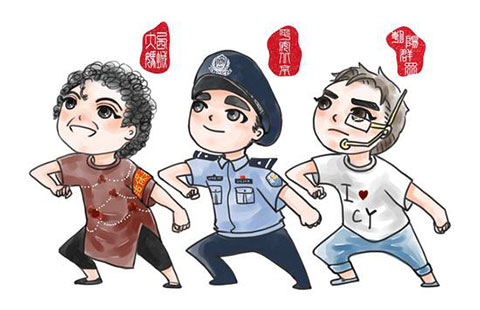Policies of China's rare earth industry
(China Daily) Updated: 2012-06-20 23:53Editor's Note: The Information Office of the State Council, or China's cabinet, on Wednesday published the country's first white paper on the rare earth industry. Following is the full text:
Preface
Rare earths are an important, non-renewable natural resource with increasingly wider applications in economic and social development.
China is among the countries with relatively rich rare earth reserves. Since the 1950s, remarkable progress has been witnessed made in China's rare earth industry. After many years of effort, China has become the world's largest producer, consumer and exporter of rare earth products.
While bringing benefits to mankind, the exploitation of rare earth has brought about increasingly significant problems regarding this resource and the environment. In the exploitation and utilization of rare earth, the rational utilization and effective protection of the environment pose common challenges for the world at large. In recent years, China has taken comprehensive measures in the links of mining, production and exporting of rare earth goods and strengthened efforts for the protection of the resource and the environment, endeavoring to ensure a sustainable and healthy development of this industry.
With the in-depth development of economic globalization, China is involved in more extensive international exchanges and cooperation in the field of rare earth. Always honoring the rules and living up to its commitments, China has provided the world with large quantities of rare earth products. It will continue to follow the WTO rules, strengthen scientific management of this industry and supply rare earth products to the global market, so as to make its due contribution to the development and prosperity of the world economy.
For some time now, some countries have been particularly fretful about the situation of China's rare earth industry and related policies, doing a lot of guesswork and conjuring up many stories. We hereby give a presentation about China's rare earth industry in order to further provide the international community with a better understanding of this issue.
I.
Current Situation of China's Rare Earth Industry
Rare earths are a group of 17 chemical elements in the periodic table of the elements, i.e., Lanthanum (La), Cerium (Ce), Praseodymium (Pr), Neodymium (Nd), Promethium (Pm), Samarium (Sm), Europium (Eu), Gadolinium (Gd), Terbium (Tb), Dysprosium (Dy), Holmium (Ho), Erbium (Er), Thulium (Tm), Ytterbium (Yb) and Lutecium (Lu), and their congeners Scandium (Sc) and Yttrium (Y). According to their atomic weights and physicochemical properties, they are divided into light, middle and heavy rare earth elements. The first five above-mentioned elements are light ones, and the rest are either middle or heavy ones. Because of their unique physicochemical properties, rare earth elements are considered indispensable in modern industry as they are extensively used in areas such as new energy, new materials, energy conservation and environmental protection, aeronautics and astronautics and electronic information, to name but a few.
China is relatively abundant in rare earth resources, and its rare earth reserves account for approximately 23 percent of the world's total. China's rare earth resources display the following characteristics:
• Their distribution presents a "light north, heavy south" pattern. Light rare earth mines are mainly located in Baotou of the Inner Mongolia Autonomous Region, and other northern areas, as well as in Liangshan of Sichuan Province, while ion-absorbed-type middle and heavy rare earth deposits are mainly found in Ganzhou of Jiangxi Province, Longyan of Fujian Province, and some other southern areas.
• The types of rare earth resources are rather diversified. China has a rich variety of rare earth minerals, including bastnaesite, monazite, ion-absorption minerals, xenotime, fergusonite, and others, with a relatively complete range of rare earth elements. Among them, the ion-absorption middle and heavy rare earth deposits occupy an important position in the world.
• The associated radioactive elements of light rare earth minerals pose major problems for the environment. Most of China's light rare earth deposits ores can be industrially mined, but thorium (Th) and other radioactive elements are difficult to treat, and therefore great attention must be paid to its impact on people's health and the ecology when they are mined, smelted and separated.
• Ion-absorption middle and heavy rare earth ores have poor occurrence conditions. In ion-absorbed-type rare earth deposits, the rare earth elements are absorbed in the soil in the form of ions, making it difficult for industrial exploitation due to sparse distribution and low abundance rate.
Since the introduction of the reform and opening-up policies in the late 1970s, China's rare earth industry has seen rapid development. Major progress has been made in the research and development of relevant mining, smelting and utilizing technologies, and the increasing expansion of the industrial scale has basically satisfied the needs of the nation's economic growth and social development.
• A complete industrial system has been achieved. China has developed three major rare earth production areas, i.e., the light rare earth production areas in Baotou of Inner Mongolia and Liangshan of Sichuan, and middle and heavy rare earth production areas in the five southern provinces centering around Ganzhou of Jiangxi Province. With a complete industrial system armed with mining, dressing, smelting and separating technologies and incorporating equipment manufacturing, material processing and end-product utilization, China can produce over 400 varieties of rare earth products in more than 1,000 specifications. In 2011, China produced 96,900 tonnes of rare earth smelting separation products, accounting for more than 90 percent of the world's total output.
• The market environment is gradually improving as China is constantly expediting reform in the rare earth industry, promoting the development of a market system featuring diversified investment, independent decision-making by businesses and pricing according to supply and demand. In recent years, investment in China's rare earth industry has experienced rapid growth, the market has been constantly expanded, state-owned, privately owned and foreign-invested sectors coexist, and the value of the rare earth metal market is approaching 100 billion yuan. The market order in this sector is gradually improving, and progressive development is being made in the merger and reorganization of businesses. The old picture of a "small, scattered, and disorderly" rare earth industry has vanished.
• Scientific and technological level has improved further. After many years of development, China has established a relatively complete R&D system, pioneered numerous technologies of international advanced levels in rare earth mining and dressing, smelting, separating, etc., and its unique mining and dressing processes and advanced separating techniques have laid a solid foundation for efficient exploitation and utilization of rare earth resources. The rare earth new materials industry has experienced steady development, and industrialization has been achieved in using rare earths to produce permanent-magnet, luminescent, hydrogen-storage, and catalytic materials, and other new materials, providing support for the restructuring and upgrading of traditional industries, and the development of emerging industries of strategic importance.
The rapid development of China's rare earth industry has not only satisfied domestic demand for economic and social development, but also made important contributions to the world's rare earth supply. For many years, China has been faithfully fulfilling its pledges upon its accession to the WTO, honoring the WTO rules, and promoting fair trade in rare earths. Currently, China supplies over 90 percent of the global market rare earth needs with 23 percent of the world's total reserves, its output of permanent-magnet, luminescent, hydrogen-storage and polishing materials, which use rare earths as raw materials, accounts for more than 70 percent of the world's total, and China-produced rare earth materials, parts and components, as well as rare earth end products, such as energy-saving lamps, special and small electric motors and NiMH batteries, satisfied the development needs of high-tech industries of other countries, especially those of the developed countries.
- Typhoon Goni to hit NE China
- Prisoners in line to be granted special amnesties
- WWII veterans' pensions raised
- 'Double standards' criticized
- Targets set for new Beijing, Tianjin and Hebei megalopolis
- Path smoothed for organ donors
- Scientists ponder exoskeletons
- Beijing-Tianjin-Hebei development to see marked progress: official
- China releases organ donation guideline
- Xi calls for crews not to ease up







